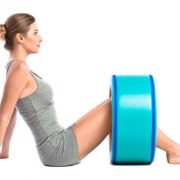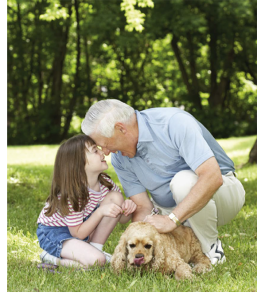Finding the centre
/in Uncategorized/by AdamEstablishing body center in Tai Chi practice is a continuous process that starts with student first class. In nature, all living organisms evolve with accordance to law that enables equilibrium and most efficient use of available energy. In the context of Tai Chi, the movement has to revolve from central point (inward) to external point (outward) . Through the course of person life, the body perception of center changes due to many factors. The analogy of sprained ankle is perfect example where naturally center of gravity shifts away from injury to allow for healing to occur. This process engages several neural circuits, in this article, I’d like to underline the importance and influence of vestibular system (VS) which is reflexive in nature (meaning operates below our conscious awareness) and responsible for our orientation in space and hence balance among other things. When we are injured, one of the VS response is to engage postural musculature (extensor muscles), that help keep us away from injury and in the same time maintaining upright posture that allows the primary role of VS to keep our head safe and sound. The interesting thing is that when our ankle heals and we can safely place body weight onto the leg, the nervous system memory about injury is stored and sometimes the adaptation that is no longer necessary doesn’t reset back to the same state as before the injury has occurred. Similarly, the area of the brain that receives information from VS is also receiving feedback from our viscera and vice versa; our organs respond to feedback from VS. We’re all familiar with the term ‘gut feeling’; our organs have what is called enteric nervous system and this highly sensitive system communicates with the brain via Vagus nerve. Although there is still a lot of ongoing research into explaining the full extent in which enteric nervous system perceives and contributes to our emotions, the Traditional Chinese Medicine has long ago established links between particular organs and emotions as well as their physical effect on associated muscles. So let us go back to sprained ankle example. If for instance during time when the injury has occurred we experienced strong emotional response that alters our perception about the event to a very unpleasant one, our nervous system stores in our subconscious memory the context and all available associations. As the tissues heal and we slowly return to place our weight onto the leg, the stored subconscious association with it might perceive that the body is still under threat and want to “protect” us from fully returning to the state before the injury. The role now for VS is to adapt to the feedback from subconscious mind and arrange recruitment of muscles that can help in the task of further protecting and in the same time finding way to move most efficiently around new center of gravity.

That adaptation might express itself differently in any other person and very often is not easily noticeable to our conscious mind. Someone with for instance history of left ankle sprain, might experience somewhere down the road pain or discomfort on the opposite side of the body in their shoulder or in the hip. If let say, during time of injury we were experiencing strong fear that left us in shock, according to TCM, the ripple effect of that experience might cause in someone blockage of energy flow in the kidney meridian. That in turn can have inhibiting effect on adapting ability of associated muscles with kidney organ (psoas, multifidius or upper trapezius). If we follow yet another connection between VS and our emotions, we can see that the any disturbance to perception of balance causes anxiety. Over or under stimulated VS, strong emotions in long term can cause knockout effects that are sometimes difficult to resolve. Adaptations in the body or persistent symptoms might not necessarily be easily identified as direct correlation to the event that have caused it in the first place. If you find that this post relate to you in some way and are curious to learn more how I can help resolve similar problems contact me here.
Tai Chi has shown to improve balance and reduce risk of falling in multiple studies, I’ll address the possible mechanism at play in my next post together with mechanism of energy medicine techniques that I’ve used in many occasions to help clients with balance issues.
Wu-ji zhuang – the practice of change through stillness.
/in Uncategorized/by Adam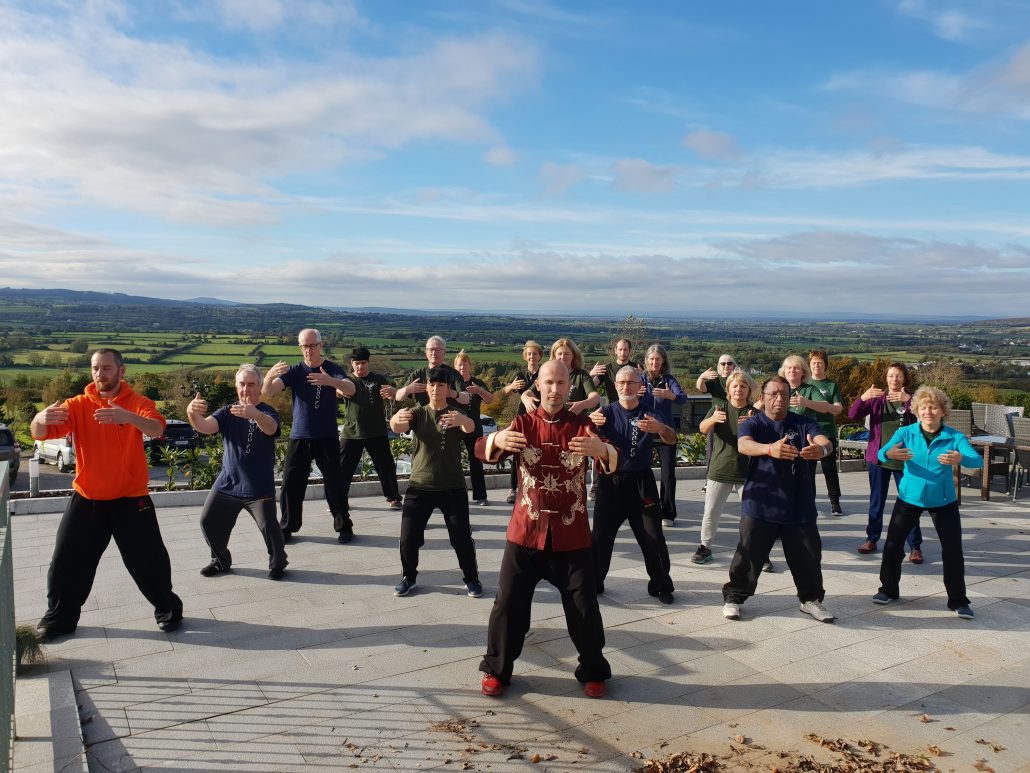
I’ve made those notes 5 years ago after experiencing
completely new sensations during standing meditation practice. I’m not saying
how or what one should do or feel in order to make this practice as close to
traditional teachings, rather offer another perspective on different stages of
development and changes to one’s perceptions. For me, standing meditation was characterised
by “milestones” – sometimes dramatic changes in conscious understanding of
practice and myself, other times changes in the body (accompanied by shifts in
perception). As far as my knowledge of literature doesn’t mention as dramatic
changes but rather natural, progressive unveiling along the way of the practice
(which is still the case for myself, I believe), it’s worth remembering that
they may happen. And whilst they do, maybe some of my blog entries will allow
others to open up to those changes to happen, trusting that they’re part of the
process rather than unwanted mistakes.
In early January the
weather doesn’t favour outdoor activities despite that I went for a short drive
towards Spiddal. Upon my arrival to the
harbour the wind has picked up greatly, waves battering the shore and stone
made harbour. Walking on its walls has prove sometimes challenging as the gusts
were powerful enough to put me out of balance, clinging close to the walls edge
I came down from the wall and went on the nearby beach to embrace elements. As
I walked I felt an urge to do little bit of Tai Chi; after all it is a perfect
spot for that! I started with the warm up, making sure I’ll do it up the tempo
to get myself warm while swinging the torso side to side with my arms loose I
used wind as my partner. Carrying on I went to do Peng Lu and Peng Lu Ji An and
that’s when I realize how the windy conditions offered a subtle resistance
making simulation of practicing with invisible opponent (or rather partner).
The words of Niall from few years back came to me as he explained how the movement
of Tai Chi resembles movement in the water. Your limbs in water feel light yet
moving them within it, requires some effort that when applied correctly makes
movement smooth and efficient. My stance had to be low in order to keep my balance
that has also offered me an extra heat. I’ve made many more repetitions as I
felt that wind could quickly cool me down. There was enough flat space to
perform Laojia so I got ready standing with my legs close together, initial
warm up has made them heavy as I’ve lifted left leg to start the form, that heaviness felt different than usual. In that moment I’ve changed my mind and
discontinued the form instead I went to do standing Zhan Zhuang. I think that standing is one of most difficult
part in Tai Chi practice as a beginner legs are getting wobbly just after few
minutes, same for the arms and the shoulders, shortly after starting they feel
tense and unpleasantly sore. In my practice I’ve avoided it as long as it was
possible after all it is easier to move,
the body will find the way to avoid pain when practicing the Form, making
the necessary adjustment without you even realizing it. Here in standing
everything is exposed, every weakness, tension, muscle imbalance, postural
compensations; you name it. Hence standing offers an easier opportunity to
notice for yourself and feel those “imbalances” and act on them. Just after starting my conscious mind wants
to be in control of the posture so I’m checking everything what I’ve learned so
far from Shifu Niall and Master Wang Haijun – feet shoulder width apart, knees
over the feet, loose hips and so on. Few minutes in and I started felling the
usual discomfort, mostly in the shoulders, some burning in the quads and few
other little twinges. Again my mind tried to react and fine tune to those by
slightly extending my arms further forward, bringing them closer again,
shifting my weight from outside of the feet to the middle and all the way
inside and so on. Nothing seemed to work so I just stud there with thought to
do it for as long as I can. Wind was ferocious and waves were breaking down
loudly on the rocks, my attention started to turn from inwards to outwards,
breathing became slower and deeper as weight grounded itself into the soft sand
underneath me. I allowed the natural flow to take over accepting the present
moment to be as it is with all the sensations coming from outside and inside.
Suddenly my body started to respond to this state of mind, I’ve noticed
spontaneous changes happening naturally without my control, it was as the body itself
knew how to find the optimal position.
My head sitting on top of the rib cage, arms comfortably extended in front of
me started to generate intense heat, no more pain in the shoulder, vertebras in
the spine felt like they opened up and
the space between them increased ever so slightly. Each breath felt like is
filling up my entire self, expanding every tissue. Everything seemed connected;
the dantian became warm and the qi energy flow become clear to me for a brief
moment until unexpectedly something disturbed my practice. I opened my eyes and saw two dogs playing joyfully
around me, one already sniffing my leg so I decided to pet him on the head in
case he’s taking me for a tree! I’ve
lost the tack of time but it was definitely the longest standing done by
me. It felt like all the work done so
far has been rewarded with this new experience. Since then I started to do
standing more often and noticed that it became easier not only for the body but
also for the mind to relax.
Adam
Viofortherapy and healthy aging
/in Uncategorized/by AdamThe fact is that aging is a natural process which differs from disorder processes.Medicine should endeavor to protect this natural aging process from diseases, allowing the life to progress in the spirit of a pleasant, active and healthy aging. Telemers, free radicals, oxidation stress, cellular cycles encoding genes, signal reflection routes and overall regenerative capacity of a human body, these are some of the interesting fields of a new science studying aging – gerontology.
Necrosis of the cerebral cortex neurons has always been regarded as an inevitable symptoms of aging. Major culprits which accelerate the dying off of neurons are oxidation stress, lack of oxygen and metabolism of calcium. At old age, geriatric changes in neurons take place which, however, do not mean the neuron’s death. Only some synapses become dysfunctional, while others can compensate for their loss. One of the geriatric changes is a loss of cellular circuits which enable space orientation. A key role in neuron disorders and degeneration is also played by estrogens, the female sexual hormones.
Most people die of arteriosclerosis complications, tumors, infections or dementia. In the very old, the main limiting factor is frailness caused by the loss of muscular strength and coordination. Aging and physical frailness are caused by reduced protheosynthesis in the muscles, reduced immunological functions, increased level of fats, reduced mass of muscles and muscular strength and reduced mineral density of bones – decalcination. The geriatric drop in the performance is caused by generalized weakness, locomotion and balance disorders and low endurance. These 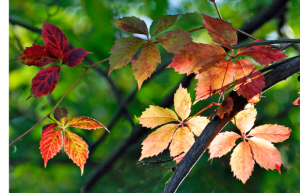 together lead to the already mentioned geriatric frailness, defined as a state of depleted physiological reserves, combined with an increased tendency to fall. Other functions too, deteriorate in old age. Most of all sexual hormones, but also pancreas, with the symptoms of geriatric diabetes. Diabetic complications remain serious, particularly in the vascular area. Diabetes increases cellular stress. Inactivity also leads to calcium deficiency and the bones are susceptible to injuries. To put it in a nutshell, old age is characterized by loss of energy. Loss of energy which is visible on the outside, but of course also by loss of energy at a cellular level. Here is an opportunity to correct the energy on a cellular level and thus efficiently slow down the process of aging.
together lead to the already mentioned geriatric frailness, defined as a state of depleted physiological reserves, combined with an increased tendency to fall. Other functions too, deteriorate in old age. Most of all sexual hormones, but also pancreas, with the symptoms of geriatric diabetes. Diabetic complications remain serious, particularly in the vascular area. Diabetes increases cellular stress. Inactivity also leads to calcium deficiency and the bones are susceptible to injuries. To put it in a nutshell, old age is characterized by loss of energy. Loss of energy which is visible on the outside, but of course also by loss of energy at a cellular level. Here is an opportunity to correct the energy on a cellular level and thus efficiently slow down the process of aging.
Biophysics is a science which tries to understand the energy processes at a cellular level, and by doing so contribute towards revitalization of the cells and extending their life.
Viofor JPS can amend these mechanisms: This instrument generates a special low induction stimulating field. 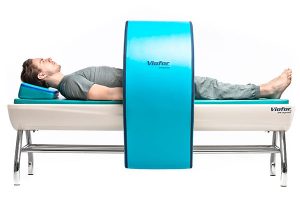 Application of thus modified electromagnetic energy leads for instance to increased utilization of oxygen in the cell, but also increased level of free oxygen in fluids, similarly as in ozone therapy. Both phenomena are very important for the aerobic manner of obtaining energy on the internal mitochondrial membrane where most ATP is formed, a process which takes place only if oxygen is present. Generation of ATP, the basic life energy substance, is boosted. ATP properties are so significant that it is no doubt of interest to explain how the electromagnetic field of Viofor JPS can affect this component.
Application of thus modified electromagnetic energy leads for instance to increased utilization of oxygen in the cell, but also increased level of free oxygen in fluids, similarly as in ozone therapy. Both phenomena are very important for the aerobic manner of obtaining energy on the internal mitochondrial membrane where most ATP is formed, a process which takes place only if oxygen is present. Generation of ATP, the basic life energy substance, is boosted. ATP properties are so significant that it is no doubt of interest to explain how the electromagnetic field of Viofor JPS can affect this component.
It has been demonstrated that exposure to the Viofor JPS electromagnetic field can increase the overall quantity of ATP by up to 40%. The time it takes to achieve this increase is 8 – 12 minutes. This determines the time these fields are applied. It also increases the passage speed through neurons, increases the cell penetration by Ca, which eliminates bone brittleness. Overall, the therapy stabilities cellular homeostasis, and all this is very important for the aging and fraying organism. It also enables cells to remove noxious substances, a function which in the aging organism
is significantly impaired. The Viofor JPS is designed to make its operation simple even for non-professionals. It allows the therapy to be administered either to the whole body or locally or to a specific point. It can be applied even to those who have been bedridden for a long time. They can be simply covered by a full-body cushion. In addition, the concept of full-body stimulation is designed to create an impression of verticalisation – upright position, which for those long-term bedridden is from the motion rehabilitation point of view very important. Combined with physiotherapy, this is a very simple and effective method leading to improving or maintaining health. With its modified electromagnetic fields and their composition, the Viofor JPS is the only instrument of its kind, which has been justifiably getting various appreciations throughout the world.
Therefore using these techniques in old age is a big benefit, both in the field of prevention as well as in the field of therapy.
Now you can avail of Viofor JPS treatment in our center or convenience of your home. LEARN MORE
Hello world!
/0 Comments/in Uncategorized/by AdamWelcome to WordPress. This is your first post. Edit or delete it, then start writing!
Subscribe to our newsletter:
SERVICES MENU
CONTACT DETAILS
Phone: 085 757 8156
EMAIL: info@neurotao.ie


